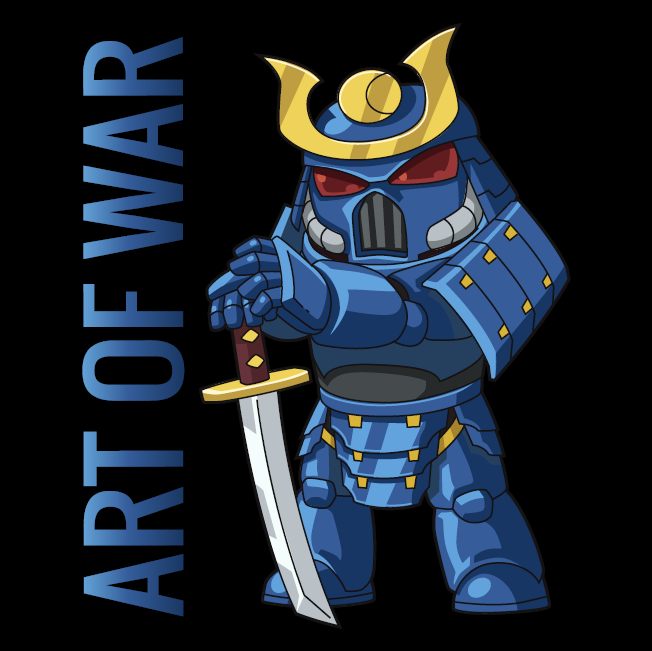Hey everyone! Erik from The Art of War here today, bringing you something a little different than we are used to. In today’s article, we’re going to visit the importance of playing the mission and discuss the eye-opening method of playing the game without focusing on annihilating your opponent.
Something I pride myself on is building and playing lists with the primary focus on playing to the mission pack of an event, whether it be ITC or WTC format. I play most of my games interacting very little with my opponent’s army, and it all starts with list building and including units with the idea of playing an attrition based game. In a game with so many variables like match-ups, the key to success is surviving. If you are still around by the end of the game, you always have a chance to pull out a win.
The most important thing you should teach yourself is at the start of every game, try to break down in your head exactly what your opponent has to do to win. Determine what tools they have in their arsenal to kill your key units, and then form a plan on how to protect yourself from their alpha strike or weather the storm. Doing this will force them to dig deeper and take bigger risks to try and open up your defense to kill your key units. This leaves them incredibly vulnerable and can sometimes turn what would normally be a good match up for them into a losing game.
I’m going to reference one of my own games I had at the ETC in 2019 playing against T’au with my gaunt carpet:
You can see in this picture, I have projected board control with the tendrils of my gaunt units, limiting what parts of the table my opponent has access to. The first thing I do playing with a horde, especially against T’au, I roughly calculate how much they could realistically kill per turn. After that, you have to remember that one of T’au’s strengths is multiplying their killing power through overwatch, so a way I can exploit that is to simply not charge them.
If I sit in the middle of the board and project control over objectives without charging them, there is simply no way he has enough firepower to kill me. Once I have established dominance over the table, I am more than happy to sit midfield and cause minor damage through spells. This puts it on them to try and make plays to bring themselves back into the game, but because all the pressure is on them, they will often make mistakes. Having control over the table makes it quite easy to extend the lead further.
Knowing when and when not to strike is the most crucial piece to the puzzle when trying to calculate the perfect time to deliver a crippling blow. More times than not, spending the better part of the game setting up a massive turn is going to have a much more significant impact than trying to inflict minor damage for six turns. This is because if your opponent is committing multiple resources to break through your defense while you’re establishing a base for a game-ending move, they simply will not have the model count, movement, turns, or resources to effectively defend themselves. This might not always be a game-winning move, but when you are on the back foot in certain match-ups, plays like these may bring the game into a more respectable margin.
Now, by no means am I saying you should never try to do damage to your opponent during the game until you’re ready to deliver your final blow. If the opportunity presents itself early, then you would be silly not to act on that. But there certainly are times where holding off on committing to killing certain units will end up being quite beneficial to you. With ITC format, staggering kills is essential for equalizing kills or even netting yourself kill more. In WTC format, it’s a little different. Everything in WTC is much more focused around attrition, so situations need to be handled a bit differently. It’s important to remember not to approach a game of WTC the same way you would ITC. This is a key example I will use to demonstrate the importance of not killing a unit every time it is on offer:
If someone has cheap detachment filler units not doing much at all sitting among a gunline (or any list with a tremendous amount of firepower), do not go out of your way to delete those units. Instead, fold them into your plan of staying alive as long as possible. Use them to give yourself connecting charges to tag units and force them to fall back, or use those small units to lock yourself in combat, negating as many rounds of shooting as possible. Not everything has to be about how much and how fast you can kill. 40k is a 6-7 turn game, so use them. The game does not have to be over in the first two or three turns. In fact, aim for the complete opposite, because the majority of armies getting around at the moment just do not have the steam to see out a grueling six turn game trading blows and efficiently managing resources.
I hope this article was insightful, and if you enjoy this sort of information or my perspectives on 40k, check out the Art of War website and take some time to have a look through some of the services the whole team and I have to offer! https://www.theartofwar40k.com/meet-the-team
And remember, Frontline Gaming sells gaming products at a discount, every day in their webcart!

